#Amalie Auguste
Photo

Amalie Auguste of Bavaria, Queen of Saxony, early 1800s.
Amalie Auguste (13 November 1801, in Munich – 8 November 1877, in Dresden) was a Bavarian princess by birth and Queen of Saxony by marriage to King John of Saxony. Amalie was the fourth child of King Maximilian I Joseph of Bavaria and his second wife Caroline of Baden. She was the identical twin sister of Elisabeth Louise, later Queen of Prussia as wife of Frederick William IV of Prussia. Three other sisters married King Frederick Augustus II of Saxony, Archduke Franz Karl of Austria and Maximilian Joseph, Duke in Bavaria.
#Amalie Auguste#Amalie Auguste of Bavaria#twin#twin sisters#female portrait#female#portrait#classical art#fine arts#woman#princess#queen#nobility#noble#aristocrat#western civilization#europe#european#europa#world history
58 notes
·
View notes
Text

“Queen Amalie Augusta of Saxony's yellow dress was stunning, and it's a sadness it hasn't been preserved. Even though it's 200 years old, it could easily be worn today.” - Text & Image Submitted by cenacevedo15
28 notes
·
View notes
Text
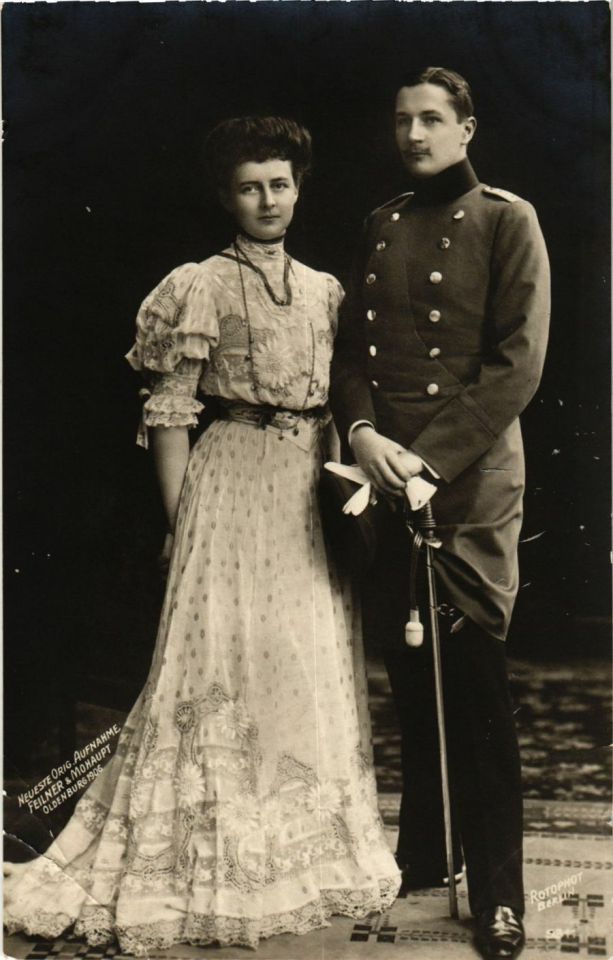
Prince August Wilhelm Heinrich Günther Viktor of Prussia and Princess Alexandra Viktoria Auguste Leopoldine Charlotte Amalie Wilhelmine of Schleswig-Holstein-Sonderburg-Glücksburg
German vintage postcard
#vintage#viktor#tarjeta#old#briefkaart#schleswig#schleswig-holstein-sonderburg#glücksburg#postcard#photography#leopoldine#wilhelm heinrich günther viktor#postal#gnther#holstein#carte postale#german#sepia#auguste#ephemera#august#sonderburg#photo#charlotte amalie wilhelmine#auguste leopoldine#wilhelm#princess#historic#alexandra#alexandra viktoria
3 notes
·
View notes
Text
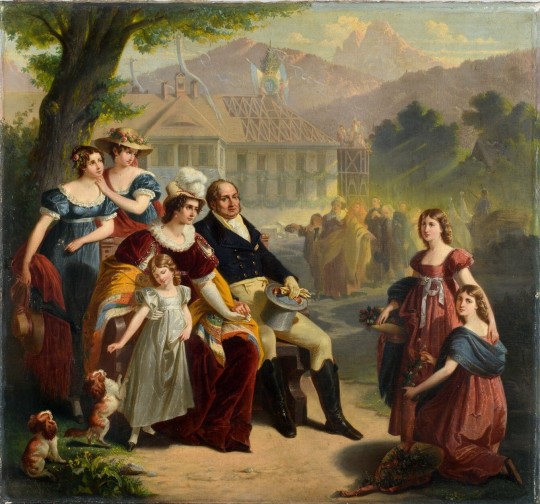
King Max I Joseph of Bavaria and his family in Kreuth, by August von Heckel, 1867. From left to right: Princesses Elisabeth and Amalie, Princess Ludovika, Queen Caroline, King Maximilian, Princesses Sophie and Maria Anna.
The family portrait was painted as a model for one of the monumental murals which once adorned the old Bayerisches Nationalmuseum on Maximilianstrasse. Today the building houses the Museum Fünf Kontinente. The historicist cycle of 143 murals depicted the most important events in the history of Bavaria and the House of Wittelsbach. Like most of them, the fresco painting after this particularly high-quality model no longer exists. The foundation of the Bayerisches Nationalmuseum dates back to the middle of the 19th century on the personal initiative of Max I's grandson, King Maximilian II Joseph. The newly erected building of the museum was inaugurated in 1867.
Via Bayerisches Nationalmuseum
#so it turns out this portrait wasn't contemporary#which explains why ludovika looks so much younger than her sisters when she should be around thirteen in this painting#maximilian i of bavaria#queen caroline of bavaria#queen elisabeth of prussia#queen amalie of saxony#queen maria anna of saxony#ludovika of bavaria duchess in bavaria#sophie of bavaria archduchess of austria#artist: august von heckel#house of wittelsbach
20 notes
·
View notes
Photo

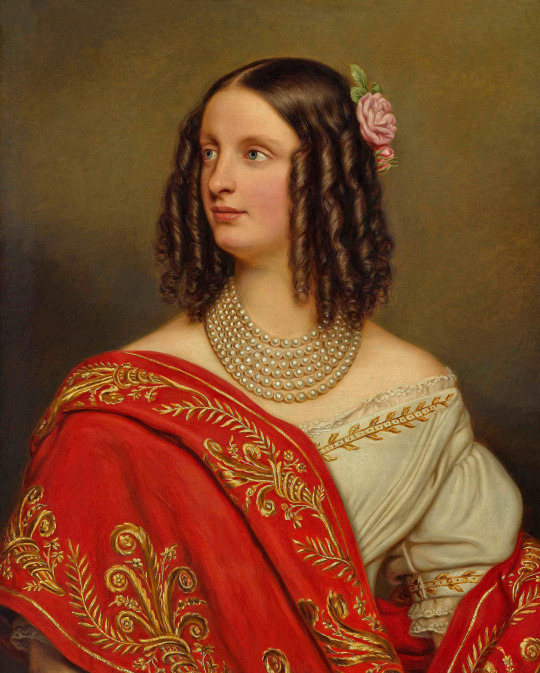

1844 Princess Helena of Hohenlohe-Langenburg, Duchess of Wurttemberg by ? (location ?). From tumblr.com/fashionsfromthepast/695466970690322432. Fixed spots in dress, hair, and sky to left. Blurred curtain and part of one of her hands. 1280X1577 @72 631kj.
1845 Prinzessin Auguste Ferdinande von Bayern, Erzherzogin von Österreich-Toskana by Joseph Karl Stieler (location ?). From Wikimedia 2654X3307 @96 2.7Mj.
1845 Alexandra Amalie von Bayern by Joseph Karl Stieler (Schönheitengallerie, Schloß Nymphenburg - München, Bayern, Germany). From the lost gallery's photostream on flickr;reduced wrinling and fixed spots w Pshop 1746X2400 @72 1Mj.
#1840s fashion#Biedermeier fashion#Louis-Philipe fashion#early Victorian fashion#Helena of Hohenlohe-Langenburg#straight hair#side curl coiffure#V part#scoop neckline#lace bertha#full skirt#Auguste Ferdinande von Bayern#Joseph Karl Stieler#hair flowers#fan front bodice#wrap#Alexandra Amalie von Bayern#off shoulder neckline
8 notes
·
View notes
Text

Some sketches of Amalie Auguste of Bavaria, Queen of Saxony and her children
5 notes
·
View notes
Text
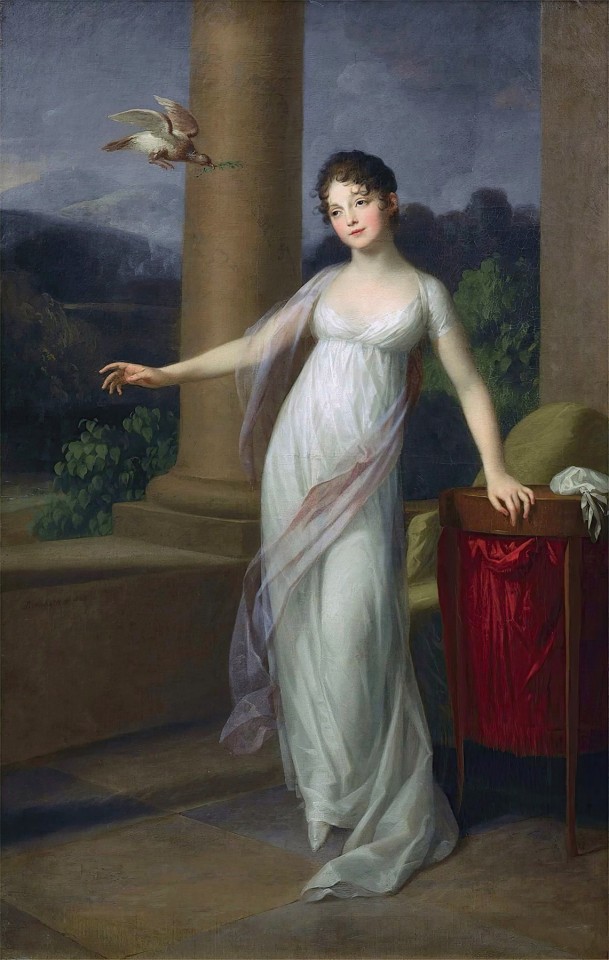
Johann Friedrich August Tischbein ( 1750-1812, German) ~ Amalie Von Levetzow, 1803
[Source: artvee.com]
144 notes
·
View notes
Text


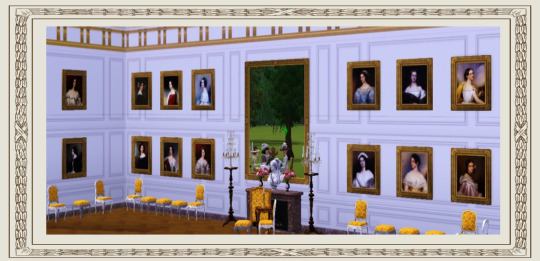
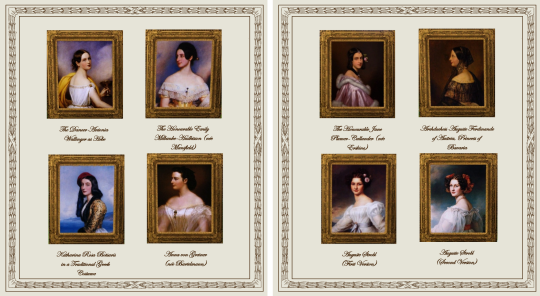


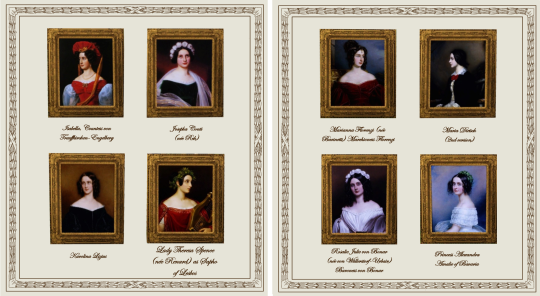
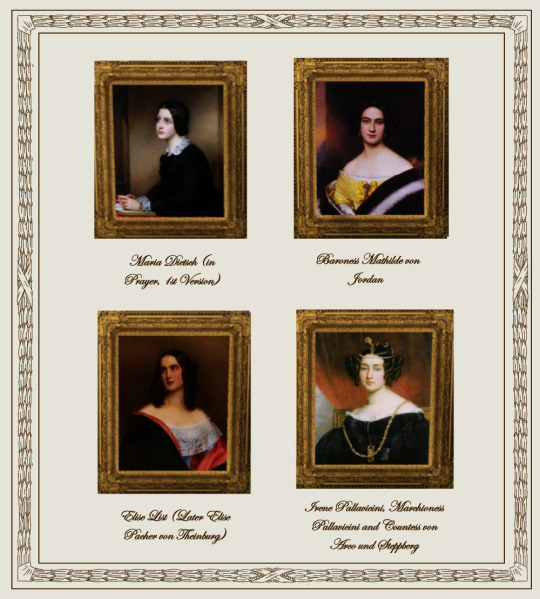

King Ludwig Ist's Gallery of Beauties.
A retexture by La Comtesse Zouboff — Original Mesh by @thejim07
The Gallery of Beauties (Schönheitengalerie) is a collection of 38 small portraits of the most beautiful women from the nobility and middle classes of Munich, Germany painted between 1827 and 1850 (mostly by Karl Joseph Stieler, appointed court painter in 1820) and gathered by Ludwig I of Bavaria in the south pavilion of Nymphenburg Palace in Munich. Two additional ones were created by Friedrick Drück and one portrait was stolen in the XXth century and remains missing.
The set includes all the 38 portraits, with the original frame swatches, fully recolorable. The portraits are of:
Friederike von Gumppenberg (later Baroness von Gumppenberg).
Amalia von Schintling.
Amalie Maximilianovna von Krüdener (née von Lerchenfeld) Baroness von Krüdener.
Anna Hillmayer.
Anna von Greiner (née Bartelmann)
Antonietta Cornelia Vetterlein.
Archduchess Auguste Ferdinande of Austria, Princess of Bavaria.
Auguste Strobl (first version).
Auguste Strobl (second version).
Baroness Mathilde von Jordan.
Carlotta von Boos zu Waldeck (née von Breidbach-Bürresheim) Baroness von Breidbach-Bürresheim.
Caroline Maximiliana Maria von Holnstein (née von Spiering) Countess von Holnstein aus Bayern
Elise List (later Elise Pacher von Theinburg
Eliza Rosanna James (née Gilbert), Known ss Lola Montez.
Helene Kreszenz Sedlmayr.
Irene Pallavicini, Marchioness Pallavicini and Countess von Arco un Steppberg.
Isabella, Countess von Traufkirchen-Engelberg.
Jane Elizabeth Digby, Later Baroness von Venningen.
Josepha Conti (née Reh).
Karolina Lizius.
Katharina Rosa Botsaris in a Traditional Greek Costume.
Lady Theresa Spence (née Renard) as Sapho of Lesbos.
Maria Dietsch (In prayer, first version).
Maria Dietsch (second version).
Marianna Florenzi (née Bacinetti) Marchioness Florenzi.
Marie Friederike Franziska Hedwig of Prussia, Crown Princess of Bavaria.
Maximiliane Borzaga.
Nanette von Kaulla.
Princess Alexandra Amalie of Bavaria.
Caroline von Oettingen-Wallerstein (later Countess von Waldbott-Bassenheim.
Regina Daxenberger.
Rosalie Julie von Bonar (née von Wüllerstorf-Urbair) Baroness von Bonar.
Sophie Friederike Dorothea Wilhemine, Archduchess of Austria (née Princess of Bavaria).
The Actress Charlotte von Hagn-Schwab as Thekla in Schiller's "Wallenstein".
The Actress Friederica Katharina "Willhemine" Sulzer.
The Dancer Antonia Wallinger as Hebe.
The Honourable Emily Mikbanke-Huskisson (née Mansfield)
The Honourable Jane Plumer-Callander (née Erskine)
Found under decor > paintings for 540§
Retextured from the "Portrait of Balsasarre Castiglione" found here
-------------------------------------------------------
CC shown here:
Wall paneling, mirror, girandole and floor by @thejim07
Fireplace by @hydrangeachainsaw
Chairs, stools, flower vases, bust, table, fireplace screen and candelabra by @joojconverts
Torchere by @martassimsbookcc
(Btw excuse my sims' reflection having tea)

Drive
(Sims3Pack | Package)
(Useful tags below)
@joojconverts @ts3history @ts3historicalccfinds @deniisu-sims @katsujiiccfinds
-------------------------------------------------------
#the sims 3#ts3#sims 3 cc#portrait#s3cc#sims 3#sims 3 download#sims 3 decor#joseph karl stieler#Munich#germany#nymphenburg#wall decor
85 notes
·
View notes
Text
The Old Mausoleum and Princess Elisabeth.
In the Grand Ducal Hessian family, the name Elisabeth evokes melancholic feelings; as the lives of the beholders of this beautiful name, which means 'God-given', the princesses Elisabeth, later Grand Duchess Elizaveta Feodorovna (1864-1918) and Elisabeth, Elizaveta Feodorovna's niece (1895-1903), were princesses whose lives and destinies were intermingled with happiness, devotion, service, and sadness. Today, remembering the beholders of this name, we can remember another Hessian princess named Elisabeth who, like Grand Duke Ernst Ludwig's daughter, also died in childhood. Being so young when she passed away, information about her is scarce. She was the fourth child and first daughter of the Hereditary Princely couple of Darmstadt, Ludwig and Wilhelmine, but the fact is that Elisabeth's parents had been leading separated lives for a while and, the age gap with her older brothers, Princes Ludwig and Karl, was of more than a decade. Therefore, that her biological father was not the Hereditary Prince does not come as a surprise, being the most probable biological father August von Senarclens-Grancy, a Swiss noble in service to the court. He was also the possible biological father of her younger siblings, Alexander and Marie, but, like her, they were also recognized by Ludwig. Wilhelmine's pregnancy with Elisabeth is mentioned in a letter from her sister, Russian Empress Elizaveta Alexeievna to her mother, Amalie of Hesse-Darmstadt: '...I am very sorry for my poor aunt in Darmstadt [Luise, Grand Duchess of Hesse and by the Rhine, mother-in-law of Wilhelmine], whose eyes are in such a bad state. Is she happy with Mimi's [Wilhelmine's nickname] pregnancy ? Dear mother, I don't think I have been secretive with you, but when Mimi told me that I was the first person she had spoken to about her pregnancy, I thought it was not for me to be the first to speak of it, but for her in every way. I still don't know how far along she is, she hasn't told me, but I'm sure you do, dear mother...' . Three months after this letter was written, on the 20 of May of 1821, Amalie Elisabeth Luise Caroline Friederike was born. Although not directly mentioned, she was possibly named in honor of her maternal grandmother and maternal aunts and her official paternal grandmother. She, as a child, possibly spent the majority of her time with nannies that took care of her, and with her mother Wilhelmine. Elisabeth has been referred to as her mother's favorite daughter. Her mother, who loved to travel to Switzerland and had visited it several times before, decided to take all her children in a travel there, but what was to be a happy event, was marked by tragedy, as Elisabeth, in the outward journey, contracted scarlet fever and died on May 27, 1826, in Lausanne, a week after her fifth birthday.
Little Elisabeth was laid to rest first in the Darmstadt City Church for some time until 1831, when the mausoleum her mother had asked court architect Georg Moller to erect in the Rosehöhe, a most loved place for her, was finished. This mausoleum with time became an important burial place for the Hessian Grand Ducal family.
As for Wilhelmine, with the death of Elisabeth, her love for Switzerland, traveling, and life in general decayed. She said some years later 'the old wanderlust is no longer to be found in me'.
Wilhelmine died in 1836, and asked her husband, now Grand Duke Ludwig II, to have a simple funeral and to be laid to rest with her beloved Elisabeth.
Sources: L'impératrice Élisabeth, épouse d'Alexandre 1er by Grand Duke Nikolai Mikhailovich, podcast 'Treffpunkt Heilingenberg' #3 'Eine Affäre in der Schweiz', Die Hessin auf dem Zarenthron: Maria, Kaiserin von Russland, http://www.park-rosenhoehe.info/Park_Geschichte.html and https://freunde-des-schlossmuseum-darmstadt.de/wp-content/uploads/2021/09/flyer_palais.pdf
Thanks to @abigaaal for her feedback on this!

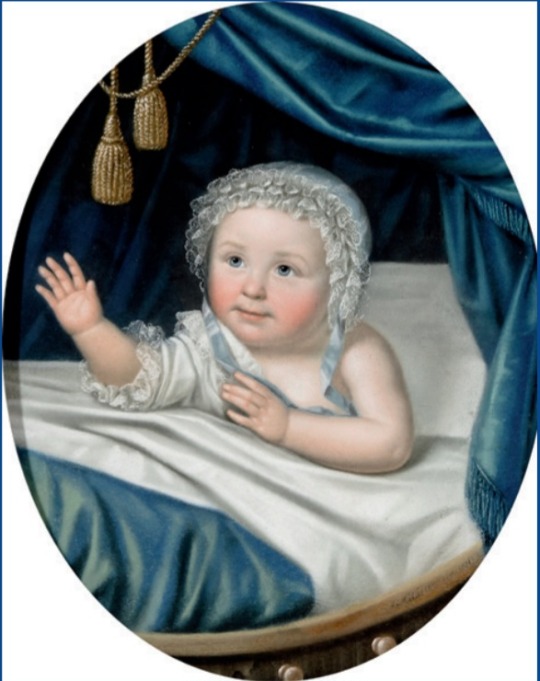


#grand ducal family of hesse-darmstadt#princess elisabeth of hesse-darmstadt (1821-1826)#Grand Duchess Wilhelmine of Hesse-Darmstadt#Princess Wilhelmine of Baden#Prinzessin Elisabeth (1821-1826)#Altes mausoleum#Old Mausoleum#Rosenhöhe#darmstadt#Too much Elizabeths
21 notes
·
View notes
Text
Links with reference to Joachim Murat
After finding a fourth link about our beloved Joachim Murat, I decided to do a bigger post which contains all of the links I have found so far! Have fun with it. ☺️✨
Gallois, Léonard: Histoire de Joachim Murat (French)
Maceroni, Francis: Interesting facts relating to the fall and death of Joachim Murat, King of Naples (in English)
Geschichte des Königreichs Neapel vom Jahre 1800 bis zum Jahr 1820 (= history of the kingdom of Naples from 1800 - 1820 in German)
Joachim Murat. Zu seinem Leben und zu seinen Briefen an die Fürstin Amalie Zephyrine von Hohenzollern-Sigmaringen (= Joachim Murat. About his life and his letters at Princess Amalie Zephyrine of Hohenzollern-Sigmaringen in German)
Das Großherzogthum Berg unter Joachim Murat, Napoleon I. und Louis Napoleon 1806 - 1813 (= the Grand Duchy of Berg under Joachim Murat, Napoleon I. and Louis Napoleon 1806 - 1813 in German)
Vie de Joachim Murat, et relation des événements politiques & militaires qui l'ont précipité du trône de Naples (= Life of Joachim Murat, and relation to political and military events which precipitate him from the throne of Naples in French)
Conversação que teve o Principe Murat com D. Manoel Godoy, relativa aos successos da Hespanha (I am not even trying to translate this. It’s in Portuguese)
Lettre d'un Anglais à son retour en Angleterre d'un voyage en Italie, au mois d'Aout 1814, sur le roi Joachim Murat: augmentée de notes pour servir à l'histoire du général Murat (= Letter from an Englishman on his return to England from a trip to Italy in August 1814, about King Joachim Murat: with additional notes for the history of General Murat in French)
34 notes
·
View notes
Note
Thanks for answering. Just doing some quick looking into it myself beyond what you mentioned in your answer. In the French Wikipedia article it mentions that Napoleon Bonaparte learned of her existence in 1802 when he overheard a conversion about her and then brought her to Paris and there was some jealously from the Empress and her daughter since the Emperor became very fond of her (although jealousy among the Emperor's relations both blood and in-laws seems pretty par for the course).
Also Eugène de Beauharnais's eldest daughter marries Crown Prince of Sweden (only son of former French Marshal Bernadotte and Napoleon Bonaparte's dejected fiancée Désirée Clary) while her own eldest daughter marries deposed Swedish Crown Prince in exile in Vienna.
Also Queen Sophie of the Netherlands mentioning her death in her correspondence google<dot>com/books/edition/A_Stranger_in_The_Hague/rp29cF15SpAC?hl=en&gbpv=1&dq=Duchess%20Hamilton%20inauthor%3AQueen%20Sophie%20(consort%20of%20William%20III%2C%20King%20of%20the%20Netherlands)&pg=PA206&printsec=frontcover
First of all: thank you so much! I feel like poor Stéphanie really is overlooked, because she did not stay at Napoleon's court for long. Basically, she gets noticed by the First Consul (or possibly rather by Josephine), sent to Madame Campan's bording school (because where else) and only truly shows up at court in 1805/6, in order to be married off to poor Karl von Baden, who had just lost his former fiancée Auguste von Bayern to a certain Eugène de Beauharnais (Stéphanie's cousin).
Which is a story in itself, of course.
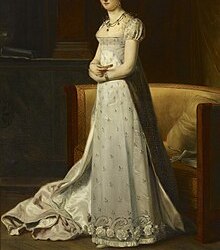
I am not sure the cousins were particularly close. In a letter to Eugène Josephine refers to Stéphanie as "la petite Beauharnais", the little Beauharnais, which seems a bit odd given the close family relations. But it also could just be a nickname and need not mean much.
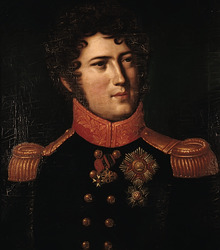
The marriage to Karl von Baden - as the story goes - started out exceptionally bad. By most accounts, Karl was not a friendly character in the first place, and he was still hurt about having been denied a good marriage (to a princess from an old regime princely family) and now being ... strongly invited to conduct a - in his eyes - bad one with some lower nobility girl who had merely been adopted by the French emperor. (According to Bavarian crown prince Ludwig, Karl shortly before his marriage accused Ludwig of not having done enough to strengthen his sister's resolve and to avoid Auguste's marriage to Eugène de Beauharnais.)
Stéphanie, as to her, was not yet 17 years old and obviously not enchanted to get married to this strange German. When Karl showed up in Paris for the wedding, he still wore his hair braided in the Prussian fashion, much to the horror of his Parisian teen bride, who declared this hairstyle, and with it the bridegroom as a whole, inacceptable. When Karl went to see a barber and returned fashionably coiffed à la Titus - Stéphanie started crying and declared he was even uglier now.
As I said, not a good start. And it did not get much better because - as the story goes - during her wedding night Stéphanie locked herself up in the bedroom with some friends from bording school, while Karl was left outside, passing the night on a chair in front of the bedroom door... allegedly.
While much of this may be exaggeration and court gossip, there's little doubt that the marriage was not a happy one. During the Prussian campaign in 1806 Napoleon even felt the need to write to the marshal in whose corps Karl von Baden was to serve, in order to make sure that Karl would not get mocked openly by the soldiers. And I remember one letter to Berthier in which Napoleon wrote something to the effect of "Okay, if he absolutely wants to come, let him join the army. But I really wish he'd go home and make a baby with his wife!"
Poor Stéphanie must have felt quite alone in that rather strange Baden family she had married into. The person actually calling the shots in Karlsruhe was Amalie von Baden, Karl's mother (and also the mother of Queen Friederike of Sweden, Queen Karoline of Bavaria and the Tsarina Elisabeth of Russia). Karl's grandfather, Grand Duke Karl sen., was old and increasingly senile, but he had a young second wife in what was called a "left-hand marriage", and this lady was in a permanent feud with Amalie. Lastly, the old grand duke also had another son, a known intriguer and womanizer.
Happy family times. Especially as all these illustrious personalities immediately united in their dislike of that second class French princess they had been forced to accept into their family.
And it seems Stéphanie, after trying to adapt to her new circumstances, rebelled quite a bit. Enough to earn her some stern rebukes from her imperial adoptive father.
It took until 1809 for the situation to truly change, until Josephine had to leave court and the Beauharnais and their foreign relations thus lost their closest link to the French court. Napoleon's marriage to an Austrian may have been felt as a threat by all of the smaller Rhinebund states, who had received French support mostly in order to serve as a buffer against Austria, and who now suddenly found themselves sandwiched between two - always hungry - super powers. Their princely families immediately closed ranks, and this included Stéphanie.
Or maybe Karl had really started to grow fond of his wife. Their first daughter was born in 1811. And after Napoleon's fall, Karl refused to try and get a divorce. (It did not keep him from heaving wild orgies during his stay at the Vienna Congress though.)
Stéphanie did end her life in Baden, where she was very well-liked by the population.
20 notes
·
View notes
Text
Namibia 2023/24 - Tag 13
Merry Christmas!!!
Frohe Weihnachten!!!
Herrschaften und Oukies!!!
Für unseren diesjährigen Besuch von Lüderitz quartierten wir uns in die Pension „Zur Waterkant“ der Familie Hälbich, in der Bremer Straße, ein.

Die Namen der unbefestigten Sandwege und Schotterstraßen auf diesem Lüderitzbuchter Hügel orientieren sich am Norden von Deutschland: Hamburger, Kieler, Lübecker und Bremer Straße.

Herr Hälbich entstammt aus einer Einwanderer Familie die bereits 1863, als eine der Ersten, aus Deutschland nach Südwest kamen.
Ihnen ist unter anderem die Gründung der Stadt Karibib zu verdanken.

Die Familie betrieb ein dort Handelshaus, stellte einige Jahre den Bürgermeister und hatte auch sonst großen Einfluss im Schutzgebiet gehabt.

Natürlich nutzte ich, bei so einem geschichtsträchtigen Gastgeber, umgehend die Gelegenheit etwas über die deutsche Zeit in Südwestafrika zu erfahren.

Die Rheinische Missionsgesellschaft war Mitte des 19. Jahrhunderts auf der Suche nach einem tatkräftigen Siedler, der zur Unterstützung der Missionsarbeit in Südwestafrika angeworben werden sollte.

Die Auflagen zur Findung dieser Person waren hoch gesteckt, verlangten die Kriterien doch, dass er über vielschichtige Fähigkeiten und als überzeugter Christ auch über Wertschätzung, Tugenden und Menschlichkeit verfügte. Die Wahl fiel auf Eduard Hälbich.

Die 7-Generationen-Folge begann am 9. Januar 1864, als eine kleine Missionsgesellschaft unter der Leitung von Dr. Hugo Hahn sowie den Brautleuten Eduard Hälbich und Amalie Bartel mit dem Segler „Emma“ nach dreimonatiger Reise in Walvis Bay an Land ging.

Kurz nach ihrer Ankunft traute Missionar Hahn das junge Paar am 1. März 1864. Somit war die erste deutsche Trauung in diesem trockenen Wüsten- und Steppengebiet vollzogen. Dem ersten deutschen Siedlerpaar standen große Herausforderungen bevor.

Mit sieben Ochsenwagen und 140 Zugochsen musste die eingetroffene Schiffsfracht zum Bestimmungsort Otjimbingwe am Swakop-Rivier gebracht werden.

Das von Missionar Rath 1849 gegründete Otjimbingwe hatte durch die vielen Konflikte der Witbooi-Nama und der Herero ein wechselhaftes Schicksal hinter sich. Mit dem Schmied, Büchsenmacher und Handwerker Eduard Hälbich wollte man den Menschen lohnbringende Arbeit vor Augen führen.

Von Beginn an musste der junge Siedler beweisen, dass er den großen Aufgaben gewachsen war. Er schreckte vor keiner Aufgabe und Pflicht zurück. Unter den Einheimischen lösten die Erfolge Eduard Hälbichs große Bewunderung aus, und schon bald erfreute er sich großer Beliebtheit.

Dem jungen Siedlerpaar wurden zwischen 1867 und 1878 sechs Kinder geschenkt: Christoph, Clara (später verheiratete von Goldammer), Eduard d.J., Wilhelm, August und Johannes.
Schon früh mussten die Kinder das Leben in seiner vollen Härte kennenlernen. Sie verließen ihr Elternhaus für viele Jahre, um sich in Deutschland ihrer Schul- und Berufsausbildung zu unterziehen.
Erst als Erwachsene kamen sie mit ihren Frauen nach Südwestafrika zurück und gründeten hier ihre Familien. Dieser Generation wurden im Laufe der Jahre insgesamt 31 Kinder geboren.

Otjimbingwe wurde zum Mittelpunkt der Missions- und Siedlerarbeiten in dem Gebiet, das damals noch nicht zum Schutzgebiet proklamiert war.

Eduard Hälbich wurde zu einer hoch geachteten Persönlichkeit. Um 1876, noch bevor das Deutsche Schutzgebiet ausgerufen wurde, wurde er vom damaligen Abgesandten der Kapregierung zum Friedesrichter ernannt. Innerhalb der einheimischen Stämme hatte Eduard Hälbich viele Konflikte zu bewältigen, und er wusste diese Probleme geschickt zu schlichten.

Als das Land 1884 unter den Schutz der deutschen Krone gestellt wurde, mehrte sich die Zahl der Durchreisenden und Besucher, die die Dienste von Eduard Hälbich in Anspruch nehmen wollten.
Im Alter von nur 52 Jahren starb Eduard Hälbich am 21. Dezember 1888.

Den folgenden Generationen entstammten Akademiker, Künstler, Kaufleute und Handwerker. Einige Söhne folgten den Spuren des Stammvaters, galt es doch, das weitläufige Farmland in der Gegend um Karibib zu bewirtschaften, das die Familie vom Hererohäuptling Zeraua erworben hatte.

Auch die geschäftlichen Interessen in Otjimbingwe und Karibib mussten weitergeführt werden. Die anderen Söhne gingen in ihrer Eigenständigkeit ihren jeweiligen Berufen nach, wodurch sich die Familienwurzeln der Hälbichs über das gesamte Land ausbreiteten - unter anderem eben bis nach Lüderitz.
Charlotte Hälbich war so freundlich all ihre Gäste zur heutigen Weihnachtsmesse in die berühmte Felsenkirche von Lüderitz mit einzuladen. Es war ihr wirklich eine Herzensangelegenheit, der wir selbstverständlich gerne nachkamen.

Alles was in Lüderitz Rang und Namen hat war auch tatsächlich beim Gottendienst anwesend. Wir konnten Herrn Grünewald, den langjährigen Inhaber des Nest Hotels, mit seiner Familie ausmachen.

Außerdem erkennen wir auch Frau Marion Schelkle, die Inhaberin von Lüderitz Safaris & Tours, mit der wir eine Stadttour machen werden.

Der Gottesdienst wird zweisprachig abgehalten: Deutsch & Englisch. Die Liedtexte werden mittels Beamer auf eine Leinwand projiziert. Eine gute Lösung.

Für den Abend hatten wir eine Reservierung im Lüderitz Nest Hotel, wo wir die halbe Kirchengemeine wieder trafen. Ein großes Hallo!

Ulf Grünewald ging von Tisch zu Tisch und begrüßte jeden einzelnen Gast persönlich. Egal ob Lokal oder Tourist, jeder wird behandelt, wie ein alter Freund.

Natürlich gibt es für uns wieder die fabelhaften Austern.

Meine Mutter findet inzwischen großen Gefallen am Kingklip, ein lokaler Fisch der am Meeresboden lebt und wirklich häßlich aussieht, aber dafür sehr lecker schmeckt.

Micha endschied sich für ein Rinderfilet, das auf den Punkt gebraten war.

Sehr schön anzusehen ist die alte Jetty, die man mittlerweile renoviert hat. Dazu noch eine tolle Beleuchtung am Abend - und schon ist die Stimmung perfekt.
Lekker Slaap!
Angie, Micha, Mama und der Hasenbär
11 notes
·
View notes
Note
Any good marriage for convenience romance books?
I actually had a hard time with this one because there are so many historicals where the marriage is convenient for one party, or like, convenient in that otherwise she'll be "ruined" or she's possibly pregnant. But here are some of the ones where both parties agree to marry without any (or much) external pressure:
Historical:
Convergence of Desire by Felicity Niven: Harry wants to devote her energies to proving Fermat's Theorem (which I now know way too much about) rather than being out in society, and Thomas needs a rich wife, so they decide to marry and Harry even says he can sleep with whoever after they marry..... unfortunately this man is only able to get it up for her soon enough.
Fiona and the Enigmatic Earl by Grace Callaway: Fiona wants to be free to continue her work as a member of an investigative agency, Lady Charlotte's Society of Angels, and Hawk wants to marry but without any emotional entanglements and to continue his spy work, so they agree to a marriage of convenience where neither party will hinder the other.
How the Wallflower was Won by Eva Leigh: After fucking up his sister and best friend's (DOM MFING KILBURN) marriage, Finn needs to marry or he'll be cut off, and Tabitha wants to join an influential intellectual society that only admits married women, and so marriage it is.
The Scot of Mine by Sophie Jordan: Kind of a marriage of convenience? Except the terms aren't laid out super clearly beforehand and Clara's brother does have a hand in the marriage, but this one is too funny to not include. Clara lies about being pregnant to escape marriage to an asshole, but when she's sent to Scotland, she meets Hunt, a laird who has a generational curse on him which means he will die before his heir is born. So Hunt decides to marry her because she's pregnant with someone else's baby so obviously, he won't die!
Except, well, it's a lie, and he finishes inside her multiple times after they're married so........
The Beast of Beswick by Amalie Howard: Astrid proposes marriage to Thane, a scarred misanthrope duke, so that her sister can escape marriage to the man who ruined Astrid's reputation. Thane eventually agrees because he's intensely attracted to her but has no intention of falling in love with her.
The Duchess Deal by Tessa Dare: Another scarred duke, this time in want of a wife that won't faint when she sees him so he can begat heirs; Emma is the seamstress who made his former fiancée's wedding dress and shows up for payment, but Ashbury decides she'll do just fine as a wife.
Worth Any Price Lisa Kleypas: The only male virgin in Kleypas-verse (well at least in the beginning), Nick Gentry is tasked with finding Charlotte on behalf of her family and fiancé, but it turns out the fiancé is, among other things, deffo a groomer so he agrees to marry her to protect her.
Devil in Winter by Lisa Kleypas: You know the deal with this one; St. Vincent needs to marry a rich heiress since he's about to be cut off and his attempted kidnapping of Lillian failed miserably, and Evie needs to escape her abusive relatives, so off to Gretna Green it is.
Contemporary:
Lush Money by Angelina M Lopez: Prince Mateo agrees to marry billionaire Roxanne and have sex with her three nights a month so she can have a kid in exchange for money for his impoverished country. The resentment in this man is real, not that it stops him from calling her mi mujer and jumping her every 10 seconds. Basically, the only wife guy I condone.
Unfortunately Yours by Tessa Bailey: Natalie and August agree to marry so Natalie can access start-up capital and August can improve his shoddy vineyards. I really loved August's (objectively dumb) no-PiV-sex-until-she-won't-regret-it rule because it actually made the wedding night kinda great, and it also drew out tension until they had no choice but to admit their feelings for one another.
The Harlequin fave Jackie Ashenden very helpfully made a page on her website devoted to all her marriage of convenience books, and yes, I recommend all of them.
Crowning His Lost Princess by Caitlin Crews: Warlord touches down in a Kansas (?) field and announces that this farmer gal was switched at birth, is actually a princess, and that they must marry for political reasons.
Trust Fund Fiancé by Naima Simone: Reagan needs access to her inheritance and proposes a marriage of convenience to her friend Zeke in order to gain access. This one is also technically friends-to-lovers but a really well done one.
*tbh your best bet in terms of modern marriages of conveniences might be harlequins because the stakes feel somewhat high and the tension is real, unlike a lot of contemporary romances which have people marrying to like, inherit a family ski resort or something.
#historical romance#contemporary romance#romance novels#ask#book recs#caitlin crews#jackie ashenden#naima simone#tessa bailey#angelina m lopez#lisa kleypas#tessa dare#amalie howard#sophie jordan#eva leigh#grace callaway#felicity niven
9 notes
·
View notes
Text


April 16, 1864 - Prince August of Sweden and Norway married Princess Thérèse Amalie of Saxe-Altenburg, Duchess of Saxony in Altenburg, Germany. Upon marrying, her official name was changed to Princess Teresia.
Teresia and August were not romantically involved and had no children, but they were supposedly good friends and lived together harmoniously.
Teresia was said to have had mental problems and used sometimes to collapse. This led the people at the Royal Court to call her "little Hopsy-Totsie" (lilla hoppetossa).
Photo 1: Portrait of Prince August of Sweden and Norway, taken 1864. Most likely taken by WA Eurenius & PL Qvists atelier.
Photo 2: Portrait of Princess Teresia by Otto Post & Co, 1864.
Follow my blog & Instagram for more royal history
#swedish royal family#royal wedding#royal history#prince august#princess teresia#prince august of sweden and norway#princess thérèse of saxe altenburg#on this day#today in history#swedish history
4 notes
·
View notes
Text
Missy Elliott Going On Arena Tour

Missy Elliott is going on her first-ever headlining tour with Busta Rhymes, Ciara, and Timbaland. The rap legend announced the tour on social media today. All of them have worked together in the past. The Out Of This World Tour will travel through more than 20 cities in North America. Missy and Busta Rhymes are known for their colorful high-tech videos and fans are already excited about what their stage sets will entail. She stated that she was thrilled about making a few firsts including the tour and being the first woman rapper inducted into the Rock and Roll Hall of Fame. Tickets will go on sale Thursday at 10 AM local time.

Out Of This World Tour Dates
Thursday, July 4 — Vancouver, BC — Rogers Arena
Saturday, July 6 — Seattle, WA — Climate Pledge Arena
Tuesday, July 9 — Oakland, CA — Oakland Arena
Thursday, July 11 — Los Angeles, CA — Crypto.com Arena
Saturday, July 13 — Las Vegas, NV — T-Mobile Arena
Tuesday, July 16 — Denver, CO — Ball Arena
Thursday, July 18 — Austin, TX — Moody Center
Saturday, July 20 — Houston, TX — Toyota Center
Sunday, July 21 — Fort Worth, TX — Dickies Arena
Wednesday, July 24 — Tampa, FL — Amalie Arena
Thursday, July 25 — Sunrise, FL — Amerant Bank Arena
Saturday, July 27 — Atlanta, GA — State Farm Arena
Thursday, August 1 — Baltimore, MD — CFG Bank Arena
Friday, August 2 — Hampton, VA — Hampton Coliseum
Saturday, August 3 — Belmont Park, NY — UBS Arena
Monday, August 5 — Philadelphia, PA — Wells Fargo Center
Thursday, August 8 — Washington, DC — Capital One Arena
Friday, August 9 — Newark, NJ — Prudential Center
Saturday, August 10 — Boston, MA — TD Garden
Monday, August 12 — Brooklyn, NY — Barclays Center
Thursday, August 15 — Detroit, MI — Little Caesars Arena
Saturday, August 17 — Montreal, QC — Bell Centre
Monday, August 19 — Toronto, ON — Scotiabank Arena
Thursday, August 22 — Rosemont, IL — Allstate Arena
3 notes
·
View notes
Text

Amalie Wolff-Malcolmi by Johann Friedrich August Tischbein (1798-1805)
#first french empire#french empire#empire style#napoleonic era#napoleonic#napoleonic fashion#portrait#19th century art#art#art history#regency#napoleonic era fashion#Johann Friedrich August Tischbein#tischbein#1805#19th century#early 1800s
65 notes
·
View notes